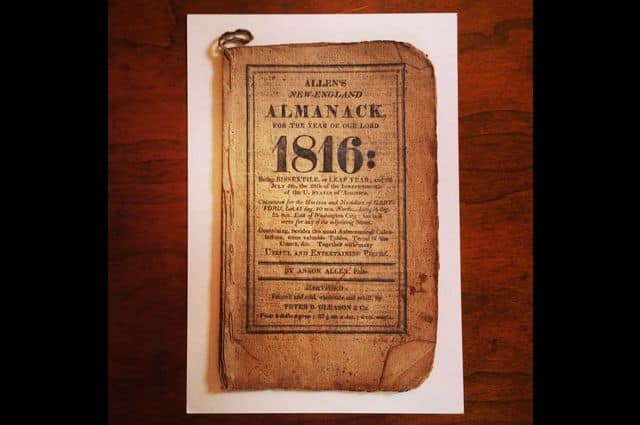
In principle, an almanac is a calendar with information relevant to astronomy and festivities.
The closest etymological antecedent of almanac is the Spanish Arabic word almanáẖ , which can be translated as "calendar" . This term, in turn, derives from the classical Arabic munāẖ , which refers to a "caravan stop" . This is linked to the custom of some ancient peoples of comparing the positions of the stars with the location of the camels that were en route.
Organization of the year
It can be said that an almanac is a record that includes all the days of the year , organized according to weeks and months , with various data and information of interest associated with each date.
Generally, an almanac includes issues linked to astronomy (such as the different lunar phases) and festivities (holidays or festivals, celebrations of a religious nature). In many cases, the almanac has blank spaces so that it is possible to write on them, which also works as an agenda .
It is important to mention that almanac can be used synonymously with calendar . The Royal Spanish Academy ( RAE ), in this framework, defines the calendar as a system that allows representing the passage of time , detailing the days in higher groupings (years, months, weeks). In addition, the sheets that graphically capture said system are called calendars.
Annual publication
The notion of almanac, on the other hand, is also used to refer to an annual publication that compiles news and data of different types. Typically, these almanacs specialize in a particular topic or sector: sports almanac , agricultural almanac , etc.
Given the flexibility of this format and the great diversity of tastes and intellectual interests that exist today, we could affirm that there are no defined limits to the topic that an almanac can cover. In each area, it offers interested parties the possibility of having one or more relevant photographs each month accompanied by a descriptive text .
In the past, this also existed, and in fact it is included in the so-called string (or thread ) literature, precisely because these editions came equipped with a string to hang them in the windows of bookstores to attract the attention of customers. This peculiar format has at least two categories, which depend on the use to which they are intended: those that can be considered small serials and small books . The former are distributed in rural areas or in towns smaller than a city; the others, however, focus on an audience specific to the city.

There are also almanacs that are annual publications focused on specific topics.
Origins of the almanac
Before the almanac there was the climatic calendar of Greece, the so-called Parapegma . In the treatise titled phases of the stars , written by the prominent astronomer Ptolemy , we find the foundations of this predecessor of the almanac, in which we can appreciate the changes in climate throughout the four seasons, the times of the year in which the stars and their constellations appear and also the solstices, among other events related to the Sun. Already in the 1st century it was possible to predict certain meteorological phenomena thanks to the detailed observations made by astronomers, and the Parapegma is a clear reflection of the advances of that time.
The first versions of the almanac were admired by various cultures, and this led them to take existing ones as a reference to adapt them to their own needs and take them along different evolutionary paths. As a curious fact, beyond issues related to astronomy and meteorology, some brought advice to live better, both on a spiritual and practical level. Needless to say, the arrival of the printing press generated an undeniable impact in this area, beyond literature, since it allowed the number of units to multiply and expand its dissemination considerably.
